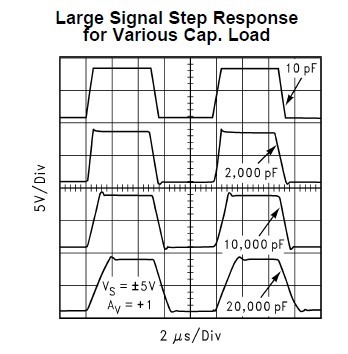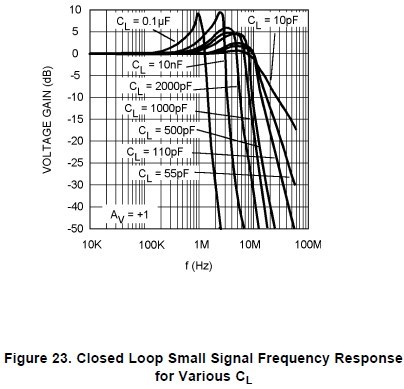A capacitive load of 800 nF (a piezo actuator) has to be driven with a step function. For example: first step 5V and 4 following steps of 1.0 V each. Slew rate 1 V/ms.
After reaching the maximum voltage (10V), the 'capacitor' needs to be discharged within 10 ms (Vin = 0V),
but that may be done by an additional comparator and FET if not possible by the OpAmp.
From the maximum output current, an OPA209 or OPA192 may be suited for a resistive load, but I expect not for a capacitive load.
Any recommendation which OpamAmp may be better suitable? There will be a +12V single supply. Required output 0 to 10V The OpAmp will be driven from a 12 bit DAC, preferably with internal reference like a TLV5636. In this case the OpAmp is in a non-inverting configuration with a gain of around 2.5




 The upper curcuit is like the one we have discussed showing the results predicted by you.
The upper curcuit is like the one we have discussed showing the results predicted by you.


